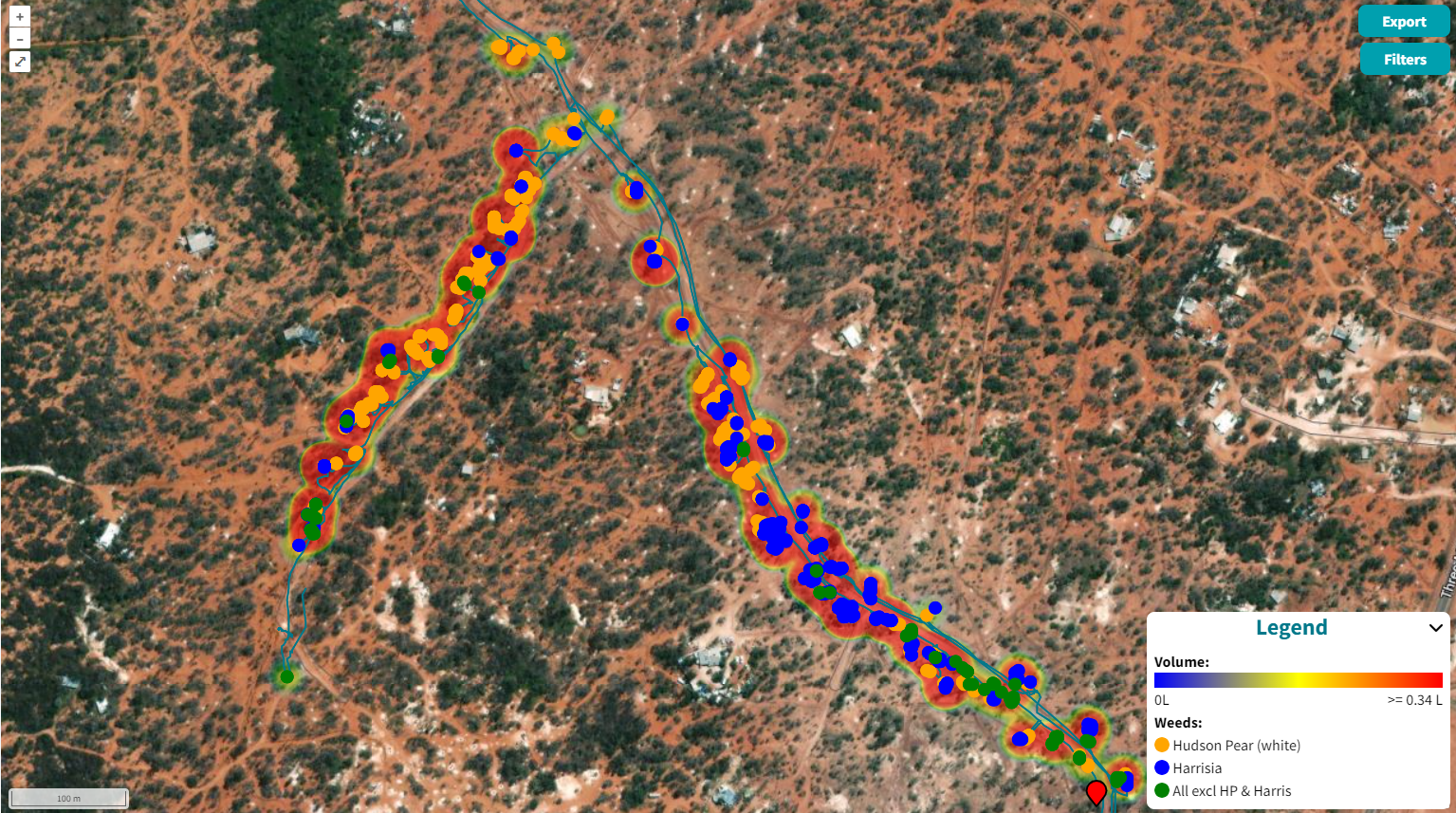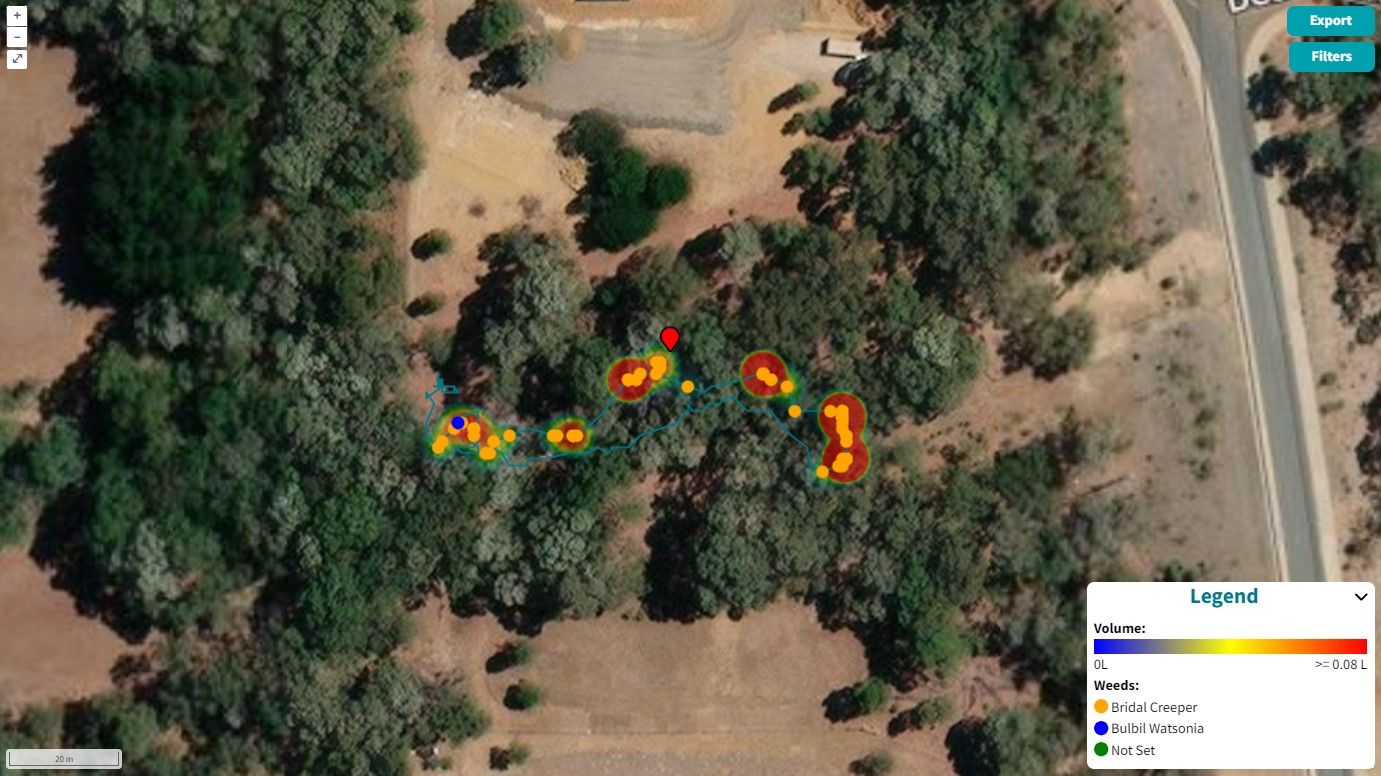Preserving Biodiversity: The Importance of Targeted Noxious Weed Spraying
Managing noxious weeds is essential for protecting Australia’s native ecosystems. These invasive plants can outcompete local species, disrupt habitats, and harm biodiversity. The impact of noxious weeds can be severe, leading to decreased agricultural productivity, increased management costs, and damage to native flora and fauna. In some cases, these species can even pose a risk to human health and livestock. Therefore, effective management is crucial to preserve the health of our environment and ensure sustainable land use.

The effects of Noxious Weeds
Noxious weeds are often aggressive invaders that thrive in various conditions, making them particularly challenging to control. Some key impacts of noxious weeds include:
- Competition for Resources: Noxious weeds can outcompete native plants for light, water, and nutrients, leading to the decline or extinction of local species. This loss of biodiversity can disrupt entire ecosystems, as native plants are essential for the survival of various animals and insects.
- Economic Costs: The presence of noxious weeds can significantly impact agriculture and land management. They can reduce crop yields and increase costs related to control measures, which can have a ripple effect on local economies. Some noxious weeds are also subject to national restrictions, making their sale and trade illegal, further complicating management efforts.
- Health Risks: Certain noxious weeds can produce toxins that are harmful to livestock and humans, posing serious health risks. For example, species like Giant Hogweed can cause severe skin reactions, while others may be toxic if ingested.
Australian Noxious Weeds List
Effective Techniques for Noxious Weed Control
To combat the spread of noxious weeds, a combination of methods is often necessary. Here are some effective techniques for managing these invasive species: (*Please note, this is a generalisation - for targeted eradication methods, please speak to your local agronomist / weed authority.)
- Targeted Herbicide Application: Using herbicides that specifically target noxious weeds helps control their growth while minimising harm to desirable plants. It’s essential to choose the right herbicide and apply it at the appropriate time for maximum effectiveness.
- Physical Removal: Techniques like mowing, cutting, or digging can physically remove noxious weeds from the landscape. This method can be particularly effective for smaller infestations but may need to be combined with herbicide use for complete control. It is important to note here, that all equipment used in the removal of noxious weeds should be thoroughly washed down and put through bio-security measures before leaving the area / property. All noxious weeds should be disposed of in a controlled environment / method.
- Natural Control: Introducing natural predators or diseases specific to noxious weeds can help manage their populations. This method requires careful planning and research to ensure that introduced species do not become invasive themselves.
- Promoting Native Vegetation: Encouraging the growth of native plants can help restore balance in the ecosystem. Native species are more adapted to local conditions and can compete with noxious weeds, reducing their spread over time.

The Benefits of Using Rapid Logix for Targeted Noxious Weed Spraying
Rapid Logix is a valuable tool for effective weed management, offering several key benefits that enhance the spraying process:
- Precise Mapping of Invasive Species: Rapid Logix allows operators to map invasive species in real-time. As areas are treated, the system tracks the location of noxious weeds and records important details, ensuring that every infested area is accounted for and making it easier to plan follow-up treatments.
- Data Export for GIS Integration: The data collected through Rapid Logix can be easily exported for use in Geographic Information System (GIS) software. This capability enables teams to analyse the spread of noxious weeds over time and make informed decisions about future management strategies. This also allows for data to be exported and reported to the relevant authorities.
- Targeted Herbicide Application: With noxious weeds, operators need to apply herbicides specifically where needed. This targeted approach helps eliminate invasive species while reducing the risk of harming beneficial plants in the surrounding area. By tracking herbicides more efficiently, we can protect the health of the local ecosystem.
- Support for Integrated Pest Management (IPM): Rapid Logix works seamlessly with integrated pest management practices. By combining targeted herbicide applications with methods like mechanical removal and promoting native vegetation, teams can adopt a more holistic approach to land management. This strategy not only helps control noxious weeds but also supports the long-term health of native ecosystems.
In summary, effective management of noxious weeds is vital for preserving Australia’s unique flora and fauna. The negative impacts of these invasive plants necessitate a multifaceted approach to control. Using Rapid Logix for targeted noxious weed spraying enhances the efficiency and effectiveness of these efforts.
With features like precise mapping, data export for GIS integration, targeted herbicide application, and support for integrated pest management, Rapid Logix proves to be an indispensable tool for land managers. By investing in these practices, we can work towards a healthier and more sustainable environment for future generations.
CONTACT US
Contact us to learn more about the Universal Flow Tracker, request a quote or give us a call on the number below.



